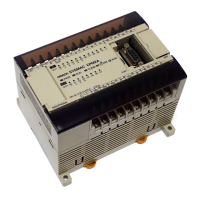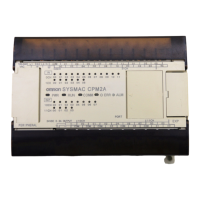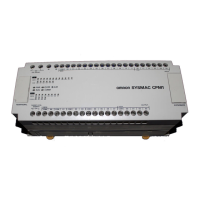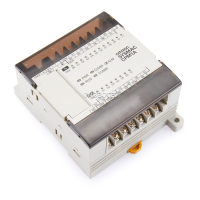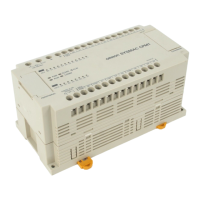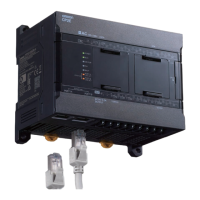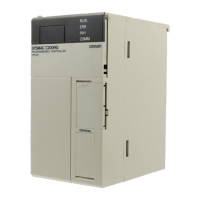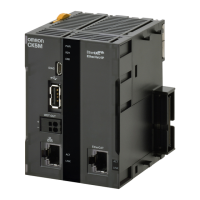293
SYSMAC and SYSMAC-CPT Support Software Appendix D
Transferring and Verifying DM Area Data
DM Area addresses not supported by the CPM2C cannot be transferred or monitored. DM 1024 to DM 6143
are not checked for DM Area verification.
Available Program Memory
Since the program capacity of the CQM1 (7,200 words) is greater than that of the CPM2C (4,096 words), the
display will show more free space than is actually available. Be sure to keep the actual program capacity in
mind while programming.
Program Transfer
When the program is transferred from the PC to the SSS with the default function code assignments, FUN18,
FUN19, FUN87, and FUN88 will be displayed as TKY, MCMP, DSW, and 7SEG. The instructions, however, will
be transferred correctly.
“???” will be displayed if any instructions not supported by the SSS are transferred from the CPM2C. Mnemon-
ics will be displayed, however, if any have been defined for the specified function code.
When the program is transferred from the SSS to the PC, TKY, MCMP, DSW, and 7SEG will be displayed on
the SSS, but will not be executed in the CPU Unit. They will be treated as NOP.
If expansion instructions are transferred to the PC with DM 6602 is set to the “default settings,” a message say-
ing that expansion instructions cannot be written because DIP switch pin 4 is OFF will be displayed. Change
the setting of DM 6602 to enable user settings to use expansion instructions. If instructions not supported by
the CPM2C are transferred to the PC, a message saying to set expansion instructions will be displayed, and
transfer will not be possible.
Expansion Instructions
It will not be possible to transfer the program if the function codes assigned to expansion instructions have
been changed from their default settings. A message to turn ON the DIP switch of the PC and execute again
will be displayed. Change the function code assignments to the CQM1 defaults shown in the following table
before programming.
If a CQM1 instruction that is not supported by the CPM2C is used in the program, an error will occur when the
program is transferred from the computer to the PC.
There are four CPM2C instructions (STUP(
−−), SYNC(−−), TIML(-−−), and TMHH(−−)) that are not supported
by the CQM1. These instructions can be used by transferring the expansion instructions from the CPM2C to
the SSS. This procedure is outlined in the following.
Function code Default CPM2C Assignments Default CQM1 Assignments
17 ASFT ASFT
18 --- TKY
19 --- MCMP
47 RXD RXD
48 TXD TXD
60 CMPL CMPL
61 INI INI
62 PRV PRV
63 CTBL CTBL
64 SPED SPED
65 PULS PULS
66 SCL SCL
67 BCNT BCNT
68 BCMP BCMP
69 STIM STIM
87 --- DSW
88 --- 7SEG
89 INT INT
